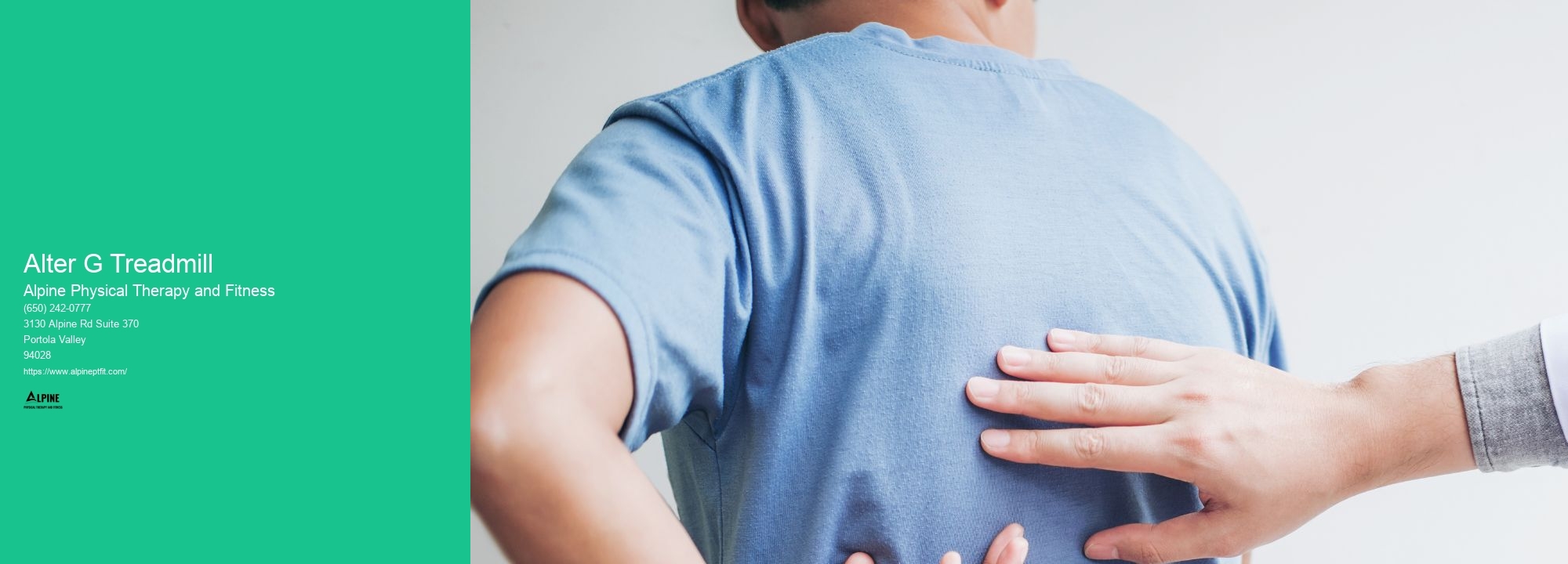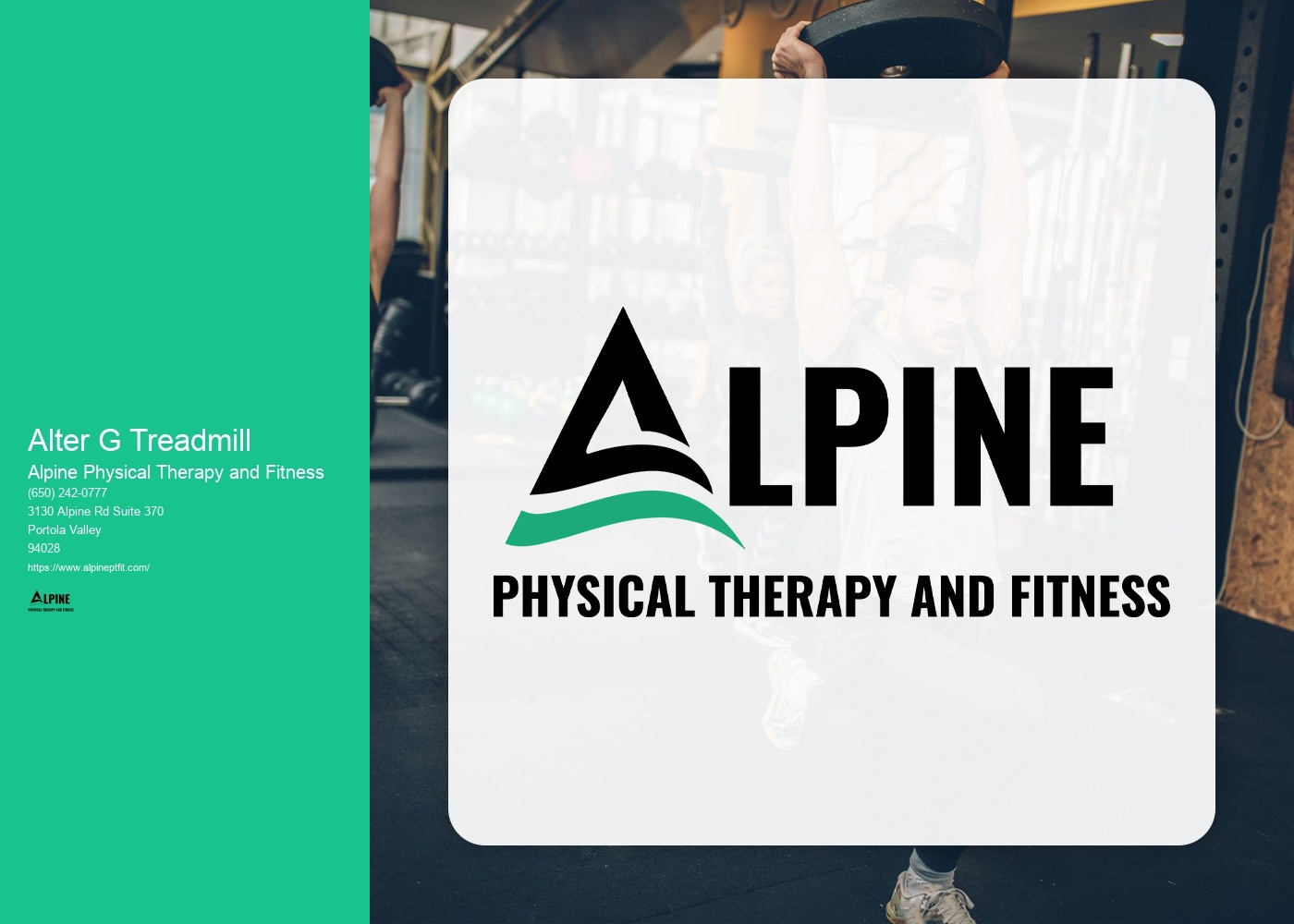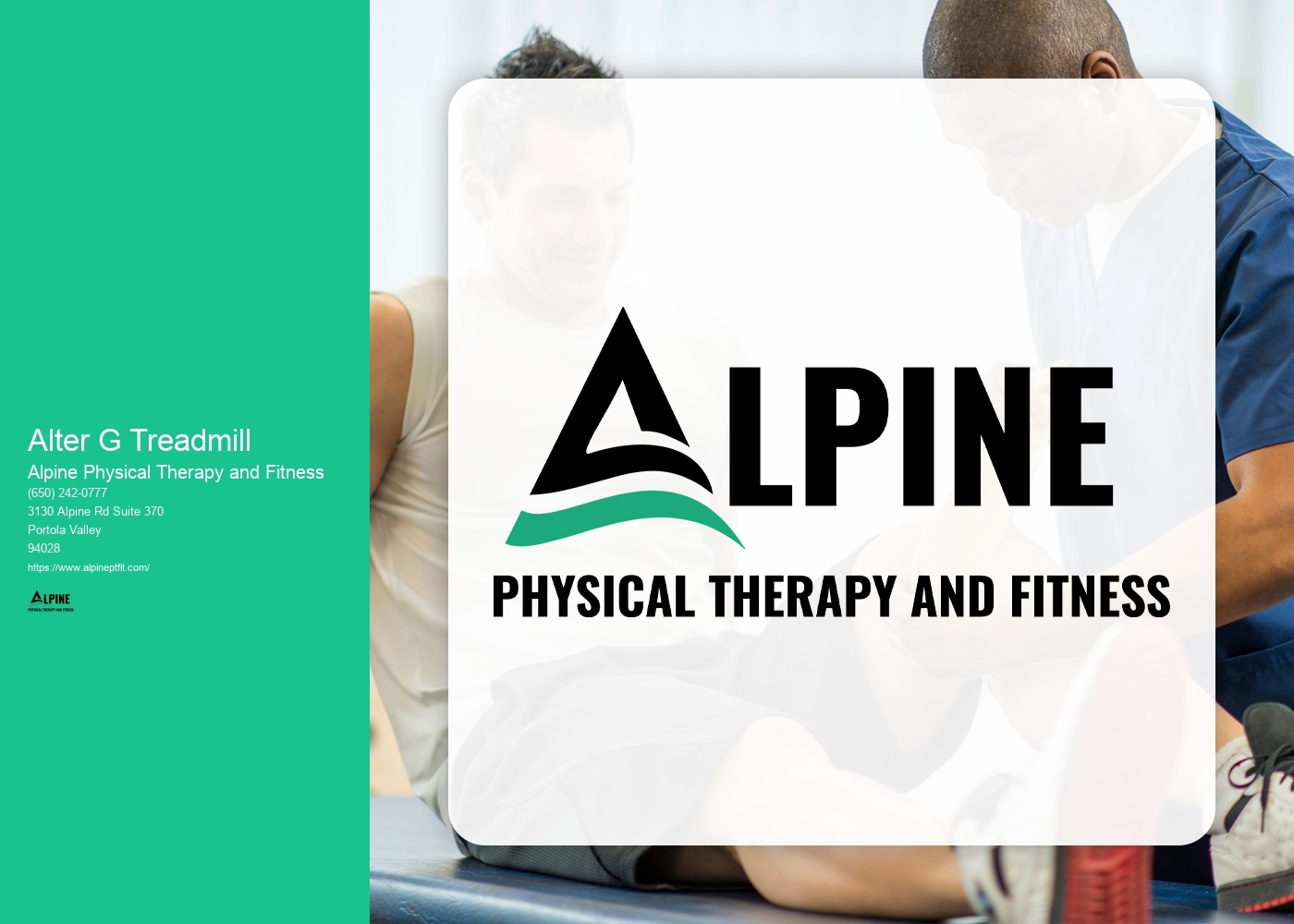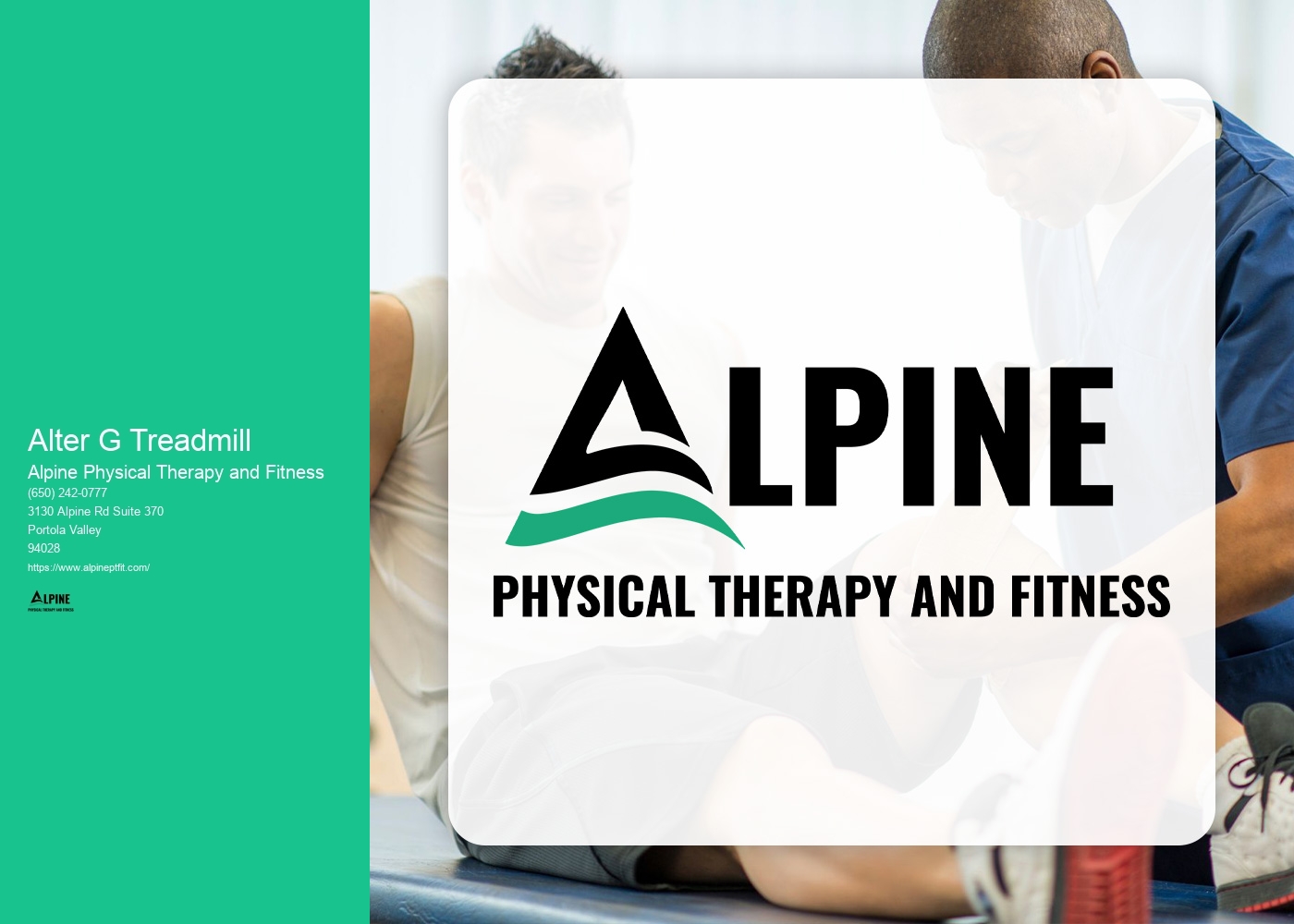

An Alter G Treadmill is a specialized treadmill that uses advanced technology to reduce the impact of gravity on the user's body. It is often used in rehabilitation settings to aid in the recovery process and improve mobility.
The Alter G Treadmill works by utilizing a unique air pressure system. The user wears a pair of neoprene shorts that zip into a waist-level enclosure, creating a sealed chamber around the lower body. The treadmill then inflates the enclosure with air, creating a lifting force that reduces the user's body weight. This allows individuals to walk or run with less impact on their joints and muscles.
There are several benefits to using an Alter G Treadmill. Firstly, it can help individuals recover from injuries or surgeries by providing a low-impact environment for exercise. This can aid in the rehabilitation process and help improve strength, balance, and range of motion. Additionally, the reduced impact can be beneficial for individuals with conditions such as arthritis or joint pain, allowing them to exercise without exacerbating their symptoms. The Alter G Treadmill also provides a safe and controlled environment for athletes to train and improve their performance.

Yes, the Alter G Treadmill can be used for rehabilitation purposes. Its unique design and technology make it an effective tool for individuals recovering from injuries or surgeries. By reducing the impact on the body, it allows for early mobilization and helps to maintain or regain strength and mobility. It can be used in a variety of rehabilitation settings, including physical therapy clinics, sports medicine facilities, and hospitals.
The Alter G Treadmill is suitable for individuals of all fitness levels. Whether you are a professional athlete looking to enhance your performance or someone recovering from an injury, the Alter G Treadmill can be adjusted to accommodate your specific needs. The air pressure system allows for precise control over the amount of body weight support, making it suitable for individuals at various stages of their fitness journey.

While the Alter G Treadmill is generally safe to use, there are some precautions to consider. It is important to consult with a healthcare professional or trained instructor before using the treadmill, especially if you have any pre-existing medical conditions or injuries. It is also important to start at a lower body weight support level and gradually increase as your body adapts to the reduced impact. Additionally, proper form and technique should be maintained while using the treadmill to avoid any potential injuries.
The cost of an Alter G Treadmill can vary depending on the specific model and features. Generally, they range in price from $30,000 to $75,000. However, it is important to note that this is a rough estimate and prices may vary. It is recommended to contact a supplier or manufacturer directly for more accurate pricing information. Additionally, some rehabilitation facilities may offer the use of an Alter G Treadmill as part of their services, so it may be worth exploring those options as well.

Yes, there are specialized exercises designed specifically for individuals who are recovering from heart surgery. These exercises are tailored to meet the unique needs and limitations of patients who have undergone cardiac procedures. They focus on improving cardiovascular fitness, strengthening the heart muscle, and promoting overall physical well-being. Some examples of specialized exercises for heart surgery recovery include low-impact aerobic activities like walking or cycling, gentle stretching exercises, and resistance training with light weights or resistance bands. It is important for individuals to consult with their healthcare provider or a cardiac rehabilitation specialist to develop a personalized exercise plan that takes into account their specific condition and recovery progress.
Hydrotherapy for wound care involves the use of specific techniques to promote healing and prevent infection. One technique is whirlpool therapy, which utilizes a whirlpool bath to cleanse the wound and remove debris. This technique helps to increase blood flow to the wound, which can aid in the delivery of oxygen and nutrients necessary for healing. Another technique is the use of moist dressings, which can be applied to the wound and then covered with a waterproof dressing. This helps to create a moist environment that promotes wound healing and prevents the formation of scabs. Additionally, hydrotherapy may involve the use of water jets or sprays to gently cleanse the wound and remove bacteria. These techniques, when used in conjunction with proper wound care practices, can help to facilitate the healing process and improve outcomes for patients.
Strain-counterstrain is a technique used in manual therapy that aims to alleviate pain and restore proper function by reducing muscle tension and improving joint mobility. This approach involves the gentle positioning of the body in a position of comfort, which is opposite to the direction of the strain or dysfunction. By holding this position for a short period of time, the therapist allows the muscles and tissues to relax, reducing the strain and promoting healing. Strain-counterstrain is particularly effective in treating musculoskeletal conditions such as muscle spasms, joint restrictions, and postural imbalances. It is often used in conjunction with other manual therapy techniques to provide comprehensive and individualized care to patients.
Core strengthening plays a significant role in women's health physical therapy due to its numerous benefits for overall well-being. The core muscles, including the abdominals, back muscles, and pelvic floor, provide stability and support to the spine and pelvis. By targeting these muscles through specific exercises, women can improve their posture, balance, and overall body mechanics. Additionally, a strong core can help alleviate back pain, improve pelvic floor function, and enhance athletic performance. In women's health physical therapy, core strengthening exercises are often incorporated to address conditions such as diastasis recti, pelvic organ prolapse, and urinary incontinence. By focusing on strengthening the core, women can improve their quality of life and regain control over their bodies.
Physical therapy can play a crucial role in the recovery of a soccer player with a hamstring strain. The therapist will design a personalized treatment plan that focuses on reducing pain, promoting healing, and restoring function. This may include a combination of manual therapy techniques, such as soft tissue mobilization and joint mobilization, to improve flexibility and range of motion. Additionally, therapeutic exercises will be prescribed to strengthen the hamstring muscles and surrounding muscles, improving stability and preventing future injuries. The therapist may also incorporate modalities like heat or ice therapy, electrical stimulation, and ultrasound to further aid in pain relief and tissue healing. Through regular physical therapy sessions, the soccer player can expect to regain strength, flexibility, and endurance, allowing them to return to the field safely and confidently.
Physical therapy plays a crucial role in the post-hip replacement rehabilitation process for seniors. It is a specialized form of rehabilitation that focuses on restoring mobility, strength, and function to the hip joint. Physical therapists use a variety of techniques and exercises to help seniors regain their independence and improve their quality of life. These may include range of motion exercises, strengthening exercises, balance training, gait training, and pain management techniques. The goal of physical therapy is to help seniors regain their ability to perform daily activities, such as walking, climbing stairs, and getting in and out of a chair, with minimal pain and discomfort. Additionally, physical therapy can help prevent complications such as muscle weakness, joint stiffness, and falls, which are common after hip replacement surgery. By working closely with physical therapists, seniors can achieve optimal outcomes and successfully return to their normal activities.